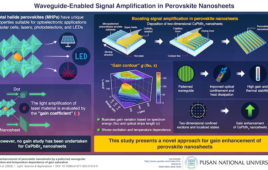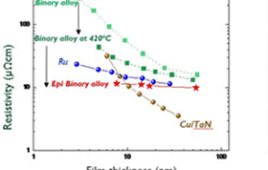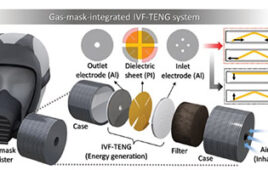
Atomically sharp edges of electrically driven graphene can act as “tweezers” that rapidly trap biomolecules from the surrounding solution. Credit: In-Ho Lee, University of Minnesota
A team from the University of Minnesota College of Science and Engineering have created graphene nano “tweezers” that can grab biomolecules floating on water, leading to a plethora of new application possibilities.
The new graphene tweezers are more effective at trapping particles compared to other techniques used in the past because graphene is only a single atom thick—less than one billionth of a meter.
The physical principle of tweezing or trapping nanometer-scale objects, known as dielectrophoresis, is generally practiced by using a pair of metal electrodes, which can be very blunt and lack the sharpness to pick up and control nanometer-scale objects.
“Graphene is the thinnest material ever discovered, and it is this property that allows us to make these tweezers so efficient,” research team leader Sang-Hyun Oh, Ph.D., a Sanford P. Bordeau Professor in the University of Minnesota’s Department of Electrical and Computer Engineering, said in a statement. “No other material can come close.
“To build efficient electronic tweezers to grab biomolecules, basically we need to create miniaturized lightning rods and concentrate huge amount of electrical flux on the sharp tip,” he added. “The edges of graphene are the sharpest lightning rods.”
The graphene tweezers could be used for a variety of physical and biological applications by trapping semiconductor nanocrystals, nanodiamond particles, and even DNA molecules. This type of trapping normally requires high voltages, restricting it to a laboratory environment. However, graphene tweezers can trap small DNA molecules at around one volt, enabling use on portable devices including mobile phones.
The researchers made the graphene tweezers by creating a structure where a thin insulating material called hafnium dioxide is sandwiched between a metal electrode and graphene.
“One of the great things about graphene is it is compatible with standard processing tools in the semiconductor industry, which will make it much easier to commercialize these devices in the future,” computer engineering professor Steven Koester, Ph.D., said in a statement.
The graphene can also “feel” the trapped biomolecules, meaning that the tweezers can be used as biosensors with exquisite sensitivity that can be displayed using simple electronic techniques.
“Graphene is an extremely versatile material,” Koester said. “It makes great transistors and photodetectors, and has the potential for light emission and other novel biosensor devices.
“By adding the capability to rapidly grab and sense molecules on graphene, we can design an ideal low-power electronics platform for a new type of handheld biosensor,” he added.
The study was published in Nature Communications.




